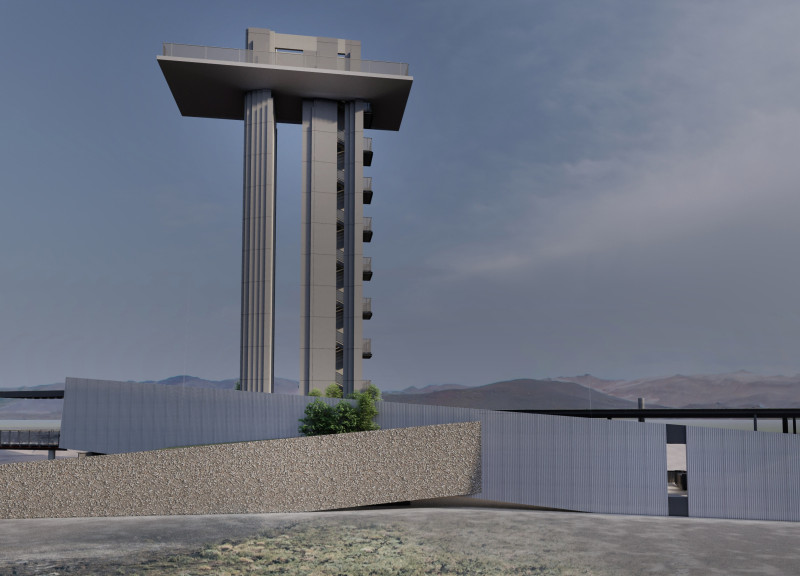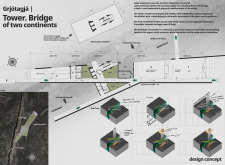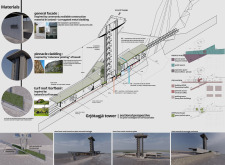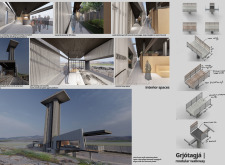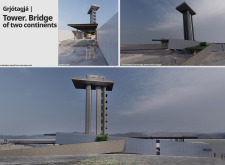5 key facts about this project
Grjótagjá | Tower. Bridge of Two Continents is located at the junction of the North American Plate and the Eurasian Plate, making the geological context an essential part of its design. The structure serves as a visitor center, providing spaces for both public enjoyment and private relaxation. Its overall concept highlights the importance of the tectonic divide, creating a dynamic interaction between architecture and the natural landscape.
Design Concept
The design is rooted in the idea of the tectonic separation, using it as a foundation for the tower's shape and layout. The building rises to allow bubble lifts, which offer expansive views of the surrounding area. Visitors journey upward toward the observation platform, which acts as a connection point to the striking landscape below, inviting a deeper engagement with nature.
Circulation and Accessibility
A key feature of the building is the central spine, designed as an accessible ramp that facilitates movement throughout the space. This ramp creates smooth transitions between different areas, including Kvennagja, the private baths, and Karlagja, the open bathing area. The thoughtful design makes it easy for visitors of all abilities to navigate the site and encourages exploration of every corner.
Materiality
Material choices reflect a commitment to local resources, drawing on what Iceland naturally provides. The exterior is clad in corrugated metal, a familiar sight in Icelandic architecture. Insulation is provided by Icelandic stone wool, emphasizing materials that are produced in the region. Additionally, turf roofs, inspired by traditional Icelandic buildings, provide effective ecological insulation while blending the structure into the landscape.
Aesthetic and Functional Integration
The observation platform is placed to capture maximum sunlight in the afternoon, enhancing the experience for visitors as they take in the views. The facility includes practical amenities like a waiting area, a gallery, ticketing spaces, and changing rooms, alongside an outdoor café. These features work together to ensure comfort and accessibility for all, while the design remains connected to the geological narrative of the site, promoting a sense of place and admiration for the environment.


